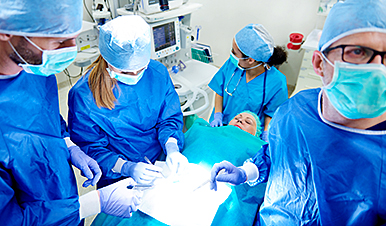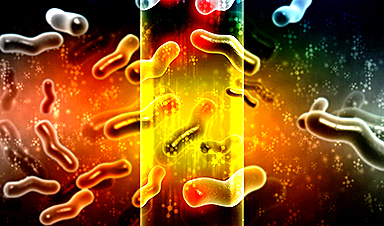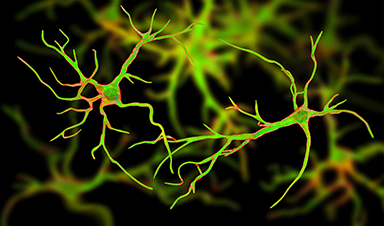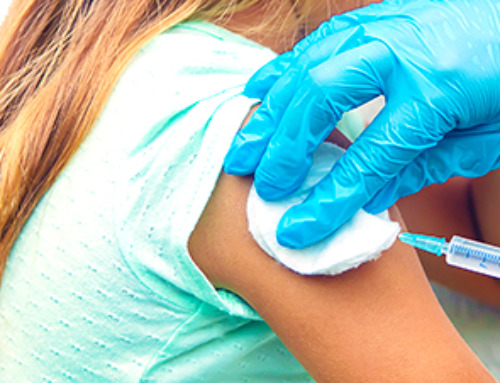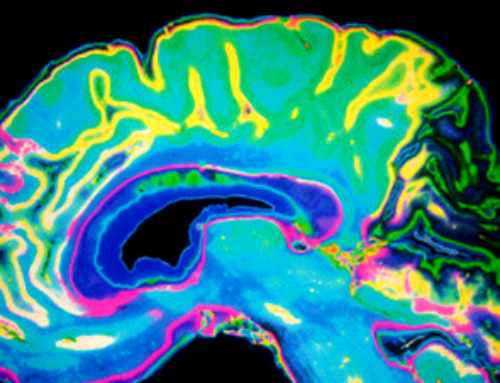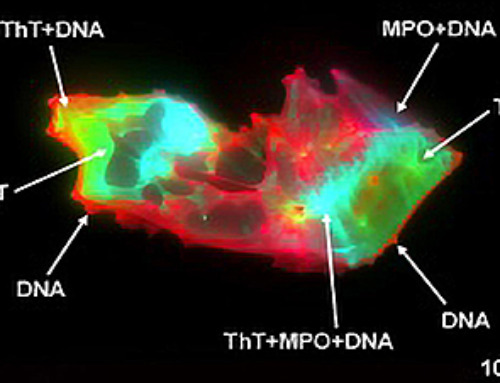| A nanotechnology-based drug delivery system developed at UVA Health to save patients from repeated surgeries has proved to have unexpectedly long-lasting benefits in lab tests – a promising sign for its potential to help human patients. | |
| The approach would allow surgeons to apply a paste of nanoparticles containing hydrogel on transplanted veins to prevent the formation of harmful blockages inside the veins. These blockages often force heart and dialysis patients to undergo repeated surgeries; some dialysis patients need seemingly endless procedures on both arms and then a leg or around their collarbone so that they can continue to receive their lifesaving treatment. | |
| The researchers have published their findings in the scientific journal Bioactive Materials (“Nano-based perivascular intervention sustains a nine-month long-term suppression of intimal hyperplasia in vein grafts”). | |
| While UVA’s innovation, dubbed “Pericelle,” produced encouraging results in early testing, there have been questions about how long the benefits this form of drug delivery could last. Would this quick and easy procedure, performed during the initial vein surgery, continue to protect patients months later? That was the hope, but even the UVA scientists were surprised by their latest results: Not only did Pericelle work at three months – when the applied drug supply ran out – but it continued to work at six months and was still working at nine months. | |
| The scientists can’t fully explain the unexpectedly durable benefits. But they are excited about what it suggests for the potential of their technique. | |
| “This is a big deal because the treatment could work much longer than we originally thought, far beyond what people would expect,” said researcher Lian-Wang Guo, PhD, who is developing the technique with UVA’s K. Craig Kent, MD. “It is so exciting that one treatment can prevent the harmful blockages for many months.” | |
A $5 Billion Healthcare Drain |
|
| Kent, a vascular surgeon who also leads UVA Health, is well acquainted with the challenges associated with “revascularization” procedures. These procedures are used to treat cardiovascular disease by restoring needed blood flow – for example, a surgeon might move a vein from the leg to the heart for patients with heart failure. | |
| The procedure is also used to create access points for patients who need dialysis. An artery and vein in the arm, for example, are often grafted together so that a patient’s blood can be removed from the body, cleansed and then returned. These dialysis connection points are called “arteriovenous fistulas,” or AVFs, and management of them in patients with end-stage renal disease is estimated to cost the U.S. healthcare system $5 billion every year. | |
| The problem is that revascularizations often cause the very problem they’re trying to fix: inadequate blood flow. The surgery itself causes a buildup of cells in the blood vessels that chokes off the blood supply. | |
| “Repeated surgeries for vascular access and revascularization are not just a major burden for patients – they represent an urgent, unmet need in medicine,” said Kent, UVA Health’s chief executive officer and UVA’s executive vice president for health affairs. “The strain on patients’ lives and the healthcare system is immense, and innovative solutions like Pericelle offer an opportunity to change this paradigm. We desperately need alternatives that can deliver durable, long-term results.” | |
| Kent, Guo and their collaborator Shaoqin Gong, PhD, at the University of Wisconsin-Madison, hope Pericelle could be the answer. Surgeons would apply the hydrogel paste on blood vessels to deliver a drug, rapamycin, that can prevent the growth of invasive cells. | |
| The UVA scientists had hoped that the results of their latest research would defy conventional wisdom and show that the drug would have benefits even after the applied supply ran out in three months. Six months, they thought, would be great; but they were wowed to see it still working in lab rats at nine months. | |
| While much more research will need to be done before the approach could be made available to patients, the scientists are encouraged by their latest milestone and optimistic about what lies ahead. This type of cutting-edge nanotechnology research will be a key pillar of UVA’s Paul and Diane Manning Institute of Biotechnology, now under construction at Fontaine Research Park in Charlottesville. | |
| “If we can find a way to prevent the need for repeated surgeries, it will have a huge impact on patients’ lives,” said Guo, of the School of Medicine’s Department of Surgery and the Robert M. Berne Cardiovascular Research Center. | |
| In parallel with their work on Pericelle, Guo and Kent are also developing another surgery-saving approach, called “epiNanopaint,” that would let surgeons “paint” nanoparticles on veins to prevent the veins from becoming clogged in the future. |
| Source: University of Virginia Health System (Note: Content may be edited for style and length) |
News
Gold Nanoclusters Could Supercharge Quantum Computers
Researchers found that gold “super atoms” can behave like the atoms in top-tier quantum systems—only far easier to scale. These tiny clusters can be customized at the molecular level, offering a powerful, tunable foundation [...]
A single shot of HPV vaccine may be enough to fight cervical cancer, study finds
WASHINGTON -- A single HPV vaccination appears just as effective as two doses at preventing the viral infection that causes cervical cancer, researchers reported Wednesday. HPV, or human papillomavirus, is very common and spread [...]
New technique overcomes technological barrier in 3D brain imaging
Scientists at the Swiss Light Source SLS have succeeded in mapping a piece of brain tissue in 3D at unprecedented resolution using X-rays, non-destructively. The breakthrough overcomes a long-standing technological barrier that had limited [...]
Scientists Uncover Hidden Blood Pattern in Long COVID
Researchers found persistent microclot and NET structures in Long COVID blood that may explain long-lasting symptoms. Researchers examining Long COVID have identified a structural connection between circulating microclots and neutrophil extracellular traps (NETs). The [...]
This Cellular Trick Helps Cancer Spread, but Could Also Stop It
Groups of normal cbiells can sense far into their surroundings, helping explain cancer cell migration. Understanding this ability could lead to new ways to limit tumor spread. The tale of the princess and the [...]
New mRNA therapy targets drug-resistant pneumonia
Bacteria that multiply on surfaces are a major headache in health care when they gain a foothold on, for example, implants or in catheters. Researchers at Chalmers University of Technology in Sweden have found [...]
Current Heart Health Guidelines Are Failing To Catch a Deadly Genetic Killer
New research reveals that standard screening misses most people with a common inherited cholesterol disorder. A Mayo Clinic study reports that current genetic screening guidelines overlook most people who have familial hypercholesterolemia, an inherited disorder that [...]
Scientists Identify the Evolutionary “Purpose” of Consciousness
Summary: Researchers at Ruhr University Bochum explore why consciousness evolved and why different species developed it in distinct ways. By comparing humans with birds, they show that complex awareness may arise through different neural architectures yet [...]
Novel mRNA therapy curbs antibiotic-resistant infections in preclinical lung models
Researchers at the Icahn School of Medicine at Mount Sinai and collaborators have reported early success with a novel mRNA-based therapy designed to combat antibiotic-resistant bacteria. The findings, published in Nature Biotechnology, show that in [...]
New skin-permeable polymer delivers insulin without needles
A breakthrough zwitterionic polymer slips through the skin’s toughest barriers, carrying insulin deep into tissue and normalizing blood sugar, offering patients a painless alternative to daily injections. A recent study published in the journal Nature examines [...]
Multifunctional Nanogels: A Breakthrough in Antibacterial Strategies
Antibiotic resistance is a growing concern - from human health to crop survival. A new study successfully uses nanogels to target and almost entirely inhibit the bacteria P. Aeruginosa. Recently published in Angewandte Chemie, the study [...]
Nanoflowers rejuvenate old and damaged human cells by replacing their mitochondria
Biomedical researchers at Texas A&M University may have discovered a way to stop or even reverse the decline of cellular energy production—a finding that could have revolutionary effects across medicine. Dr. Akhilesh K. Gaharwar [...]
The Stunning New Push to Protect the Invisible 99% of Life
Scientists worldwide have joined forces to build the first-ever roadmap for conserving Earth’s vast invisible majority—microbes. Their new IUCN Specialist Group reframes conservation by elevating microbial life to the same urgency as plants and [...]
Scientists Find a Way to Help the Brain Clear Alzheimer’s Plaques Naturally
Scientists have discovered that the brain may have a built-in way to fight Alzheimer’s. By activating a protein called Sox9, researchers were able to switch on star-shaped brain cells known as astrocytes and turn them into [...]
Vision can be rebooted in adults with amblyopia, study suggests
Temporarily anesthetizing the retina briefly reverts the activity of the visual system to that observed in early development and enables growth of responses to the amblyopic eye, new research shows. In the common vision [...]
Ultrasound-activated Nanoparticles Kill Liver Cancer and Activate Immune System
A new ultrasound-guided nanotherapy wipes out liver tumors while training the immune system to keep them from coming back. The study, published in Nano Today, introduces a biodegradable nanoparticle system that combines sonodynamic therapy and cell [...]
